This wonderful Cornish workshop and museum is dedicated to the legacy of studio pottery trailblazer Bernard Leach
Become an instant expert on…‘firsts’ in art
Become an instant expert on…‘firsts’ in art
23 Jan 2024
When did the earliest lifelike teardrop appear in a painting? Or the original kiss, or butterfly? For the first month of the year, we ask John-Paul Stonard to reveal his five ‘firsts’ in the history of art
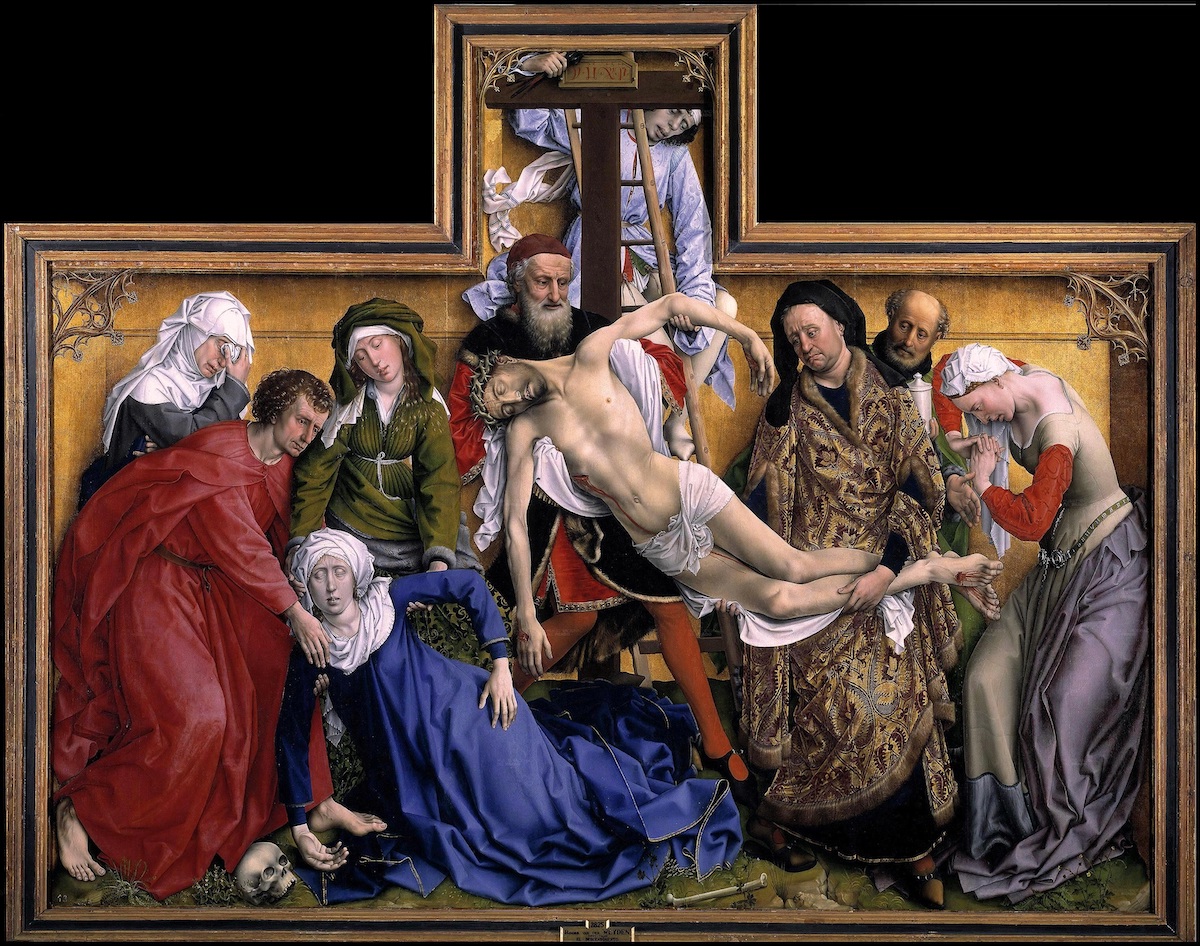 The Descent from the Cross, c.1435, by Rogier van der Weyden, with the earliest depiction of truly realistic teardrops. Image: Wikimedia Commons
The Descent from the Cross, c.1435, by Rogier van der Weyden, with the earliest depiction of truly realistic teardrops. Image: Wikimedia Commons
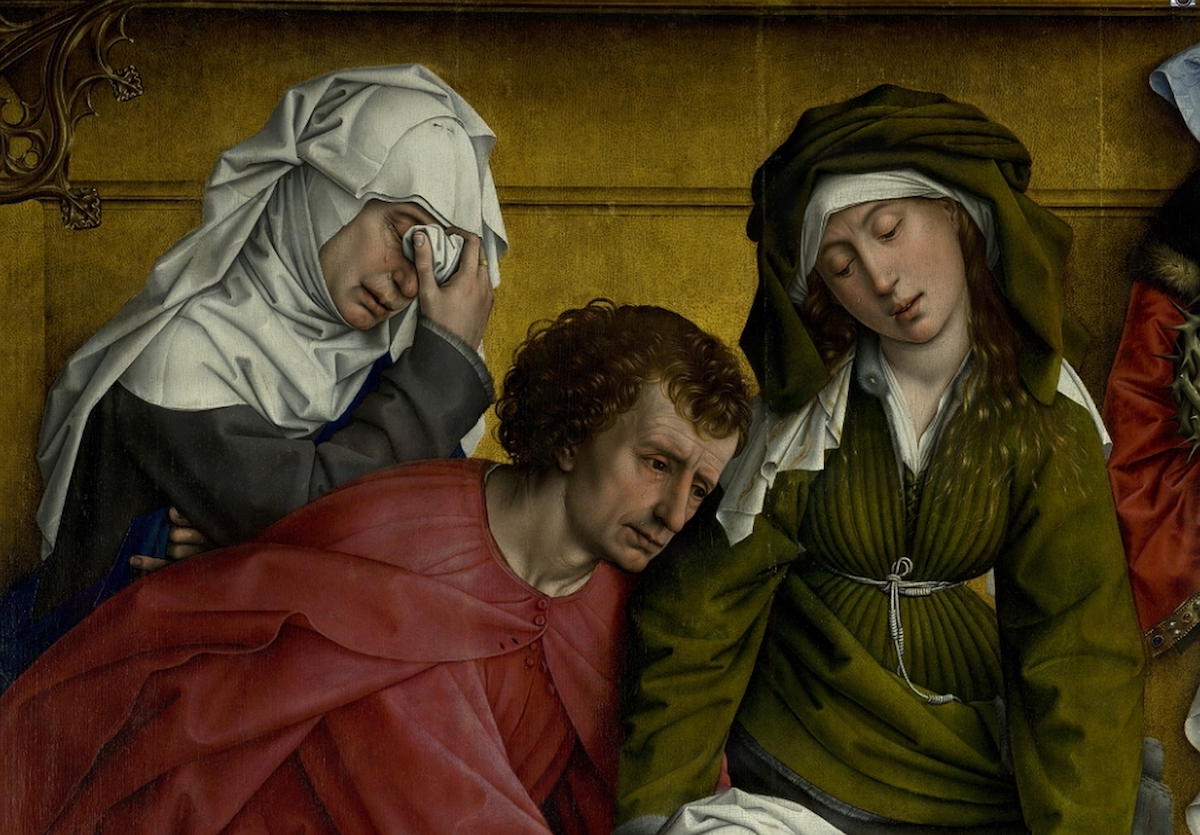 Salty sorrow: a detail of Van der Weyden’s The Descent from the Cross. Image: Wikimedia Commons
Salty sorrow: a detail of Van der Weyden’s The Descent from the Cross. Image: Wikimedia Commons
1. Falling teardrops
When Picasso painted his Weeping Woman of 1937, based on his partner Dora Maar, but also in response to the Spanish Civil War, we feel we are seeing tears — real, psychological tears — for the first time. The woman’s eyes are shown as boats capsizing, the tears drenching the handkerchief she holds to her face.
Yet there have been many images of the human face distorted by grief.
Giotto was the first great painter of human emotion. His Lamentation (The Mourning of Christ), one of the fresco panels of the Arena (sometimes called ‘Scrovegni’) Chapel at Padua, completed around 1305, shows human faces contorted with genuine and believable sorrow. The characters surrounding Christ are clearly crying but their tears are hard to see; this is not only because the images are so high on the walls, but because such small glinting details are hard to capture in the rather flat medium of fresco painting.
The first real teardrops were painted by the Netherlandish artist Rogier van der Weyden, in his The Descent from the Cross, c.1435, kept at the Prado Museum in Madrid. Following in the tradition of oil painting established by Jan van Eyck, Van der Weyden paints the figures surrounding Christ’s descent in scintillating detail, their faces stained with utterly lifelike tears. Van der Weyden captures the glint, shadow and shape of actual tears, showing them convincingly rolling down faces, pooling around nostrils and the corners of mouths, as tears do.
The Descent from the Cross is the first time that teardrops play a significant part in a work of art, showing not only naturalistic grief but also appearing as symbols of sanctity.
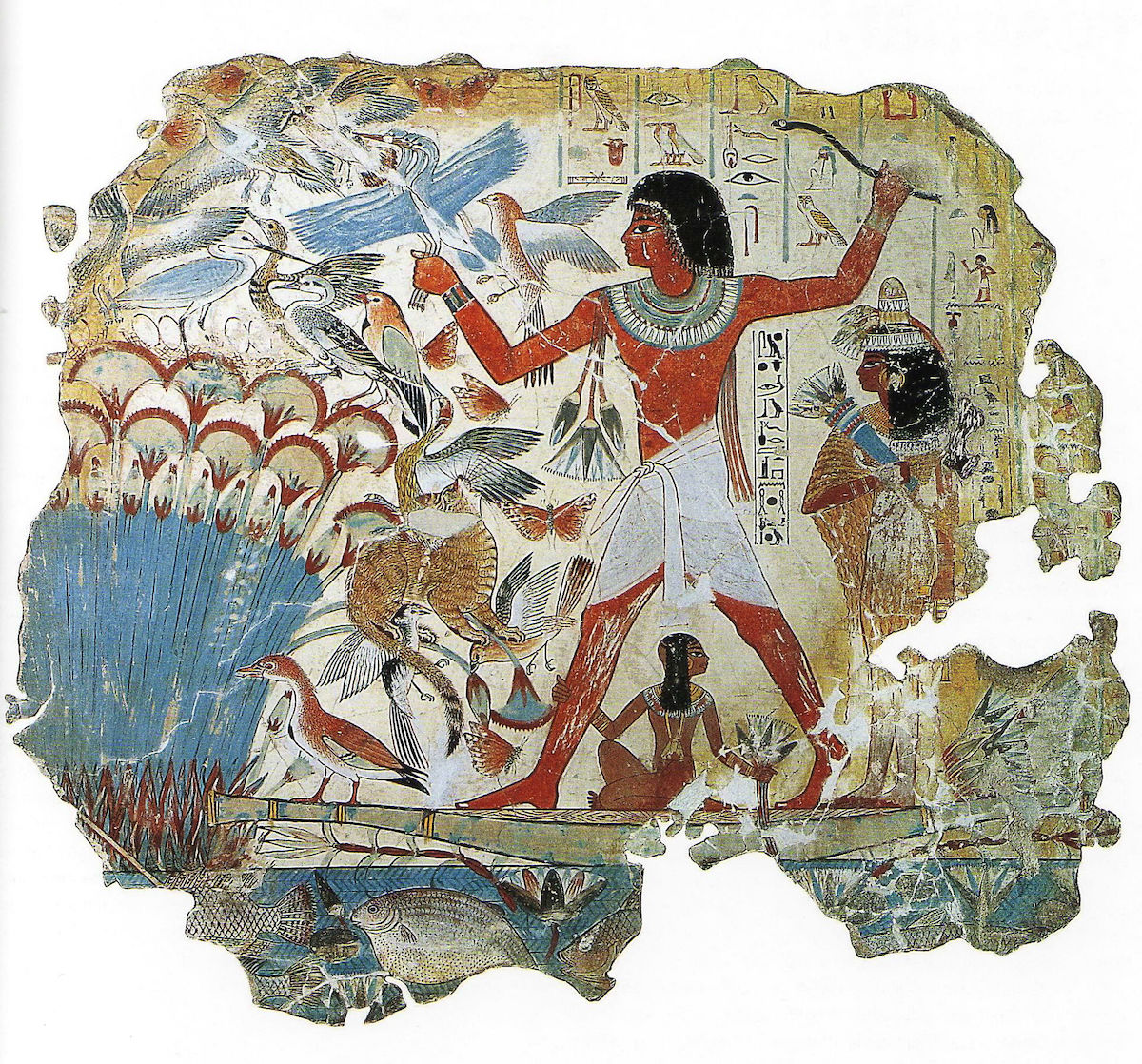 Part of a mural from the tomb of Nebamun in Thebes. Image: Wikimedia Commons
Part of a mural from the tomb of Nebamun in Thebes. Image: Wikimedia Commons
2. Float like a butterfly
In their delicacy and variety butterflies and moths captured the imagination of the earliest artists.
One of the most impressive ancient depictions of a butterfly appears on the wall paintings from the tomb of Nebamun, a scribe in charge of grain collection in Egypt, who died around 1350 BC. The wall paintings exist only as fragments, having been removed from the tomb at the beginning of the 19th century, finding their way to the British Museum where they remain. They are the best paintings that remain from ancient Egypt, from the hand of an unknown artist. And that artist had an unrivalled ability to depict natural scenes in great detail.
One scene shows Nebamun standing on a skiff, hunting fowl in the marshes. His daughter sits beneath him and his wife stands behind him. In front is a dense scene of birdlife, including herons and a jay, and a cat with a jay and another bird in its claws.
There are also seven butterflies, which have been identified as the species African queen, hovering and settled around the papyrus marsh.
This might be the first (or earliest known) depiction of a particular butterfly, but butterflies and moth shapes appeared over a thousand years earlier, in the art of the nature-loving Minoans on Crete; they were also painted as silhouettes in caves and on rock surfaces dating to Neolithic times. The most famous is a rather rudimentary but unmistakably butterfly-like form engraved on a rock in the Val Camonica in Italy, made around 7,000 years ago. Quite what species are shown in these earliest images is open to conjecture.
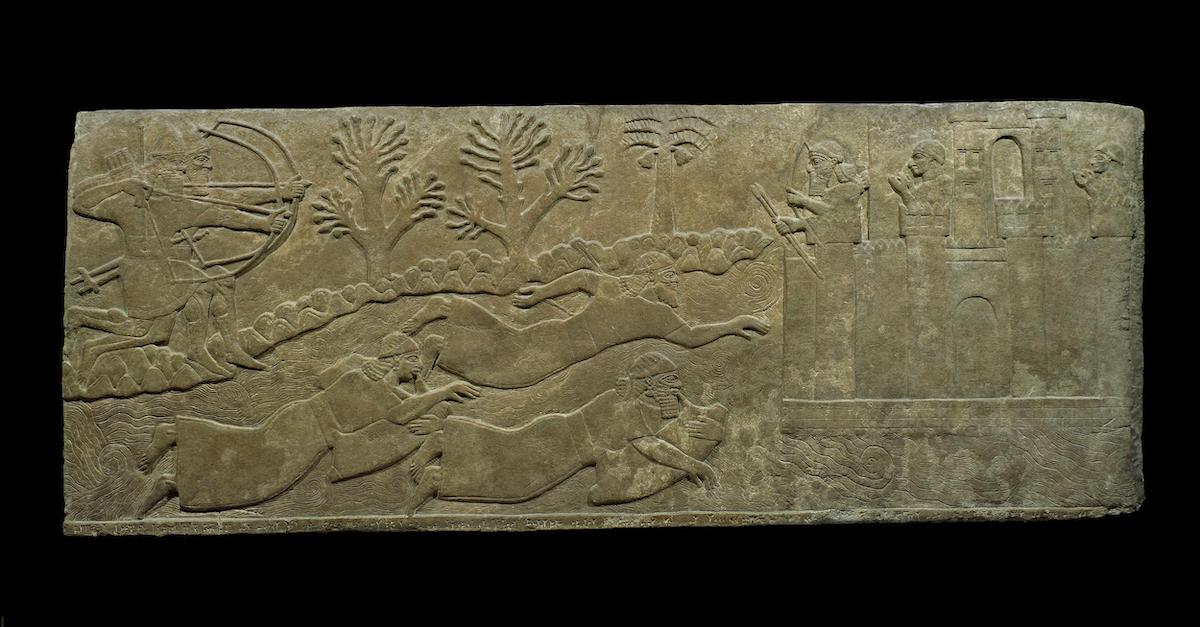 An Assyrian carving showing swimmers using inflated skins during an attack on a city by Ashurnasirpal II, 875–860 BC. Image: © The Trustees of the British Museum/Creative Commons
An Assyrian carving showing swimmers using inflated skins during an attack on a city by Ashurnasirpal II, 875–860 BC. Image: © The Trustees of the British Museum/Creative Commons
3. Taking to the water
When we think of images of swimmers in art, our minds might turn at first to David Hockney whose great 1972 painting, Portrait of an Artist (Pool with Two Figures), captures the extraordinary rippling patterns of light and form of a man swimming under the surface of water. Hockney is doing here what he does best: creating a visual equivalent for something otherwise difficult to depict — the ungraspable sight of a human body moving through water.
It is this ‘ungraspability’ that makes swimming such an unusual subject in art. It's all the more remarkable, therefore, that there are depictions of swimming figures in the art of the ancient world.
The Louvre holds a Greek vase from around 530 BC, signed by the painter Andokides, which shows a woman bathing, or cavorting, in the water. It seems certain there must have been other representations of the subject — both the Greeks and Romans were keen swimmers — but they are now lost.
Three hundred years earlier, however, far more detailed images of the human body propelling itself through water had been carved by an Assyrian artist, on two of the wall panels for the Northwest Palace of Ashurnasirpal II (883–859 BC) at Nimrud.
The figures are shown either swimming freely, or grasping onto inflated animal bladders, which they breathe into, to keep themselves afloat. They are not only the first human swimmers in art (probably) but also – shown in other parts of the panel – some of the first anatomically correct naked human figures. You’ll find this wonderful piece in the British Museum.
One of the earliest depictions of any animal swimming is also one of the most famous sculptures from prehistory. It is The Swimming Reindeer, a depiction of two reindeer fording a river, carved from mammoth ivory around 13,000 years ago. It, too, is in the collection at the British Museum.
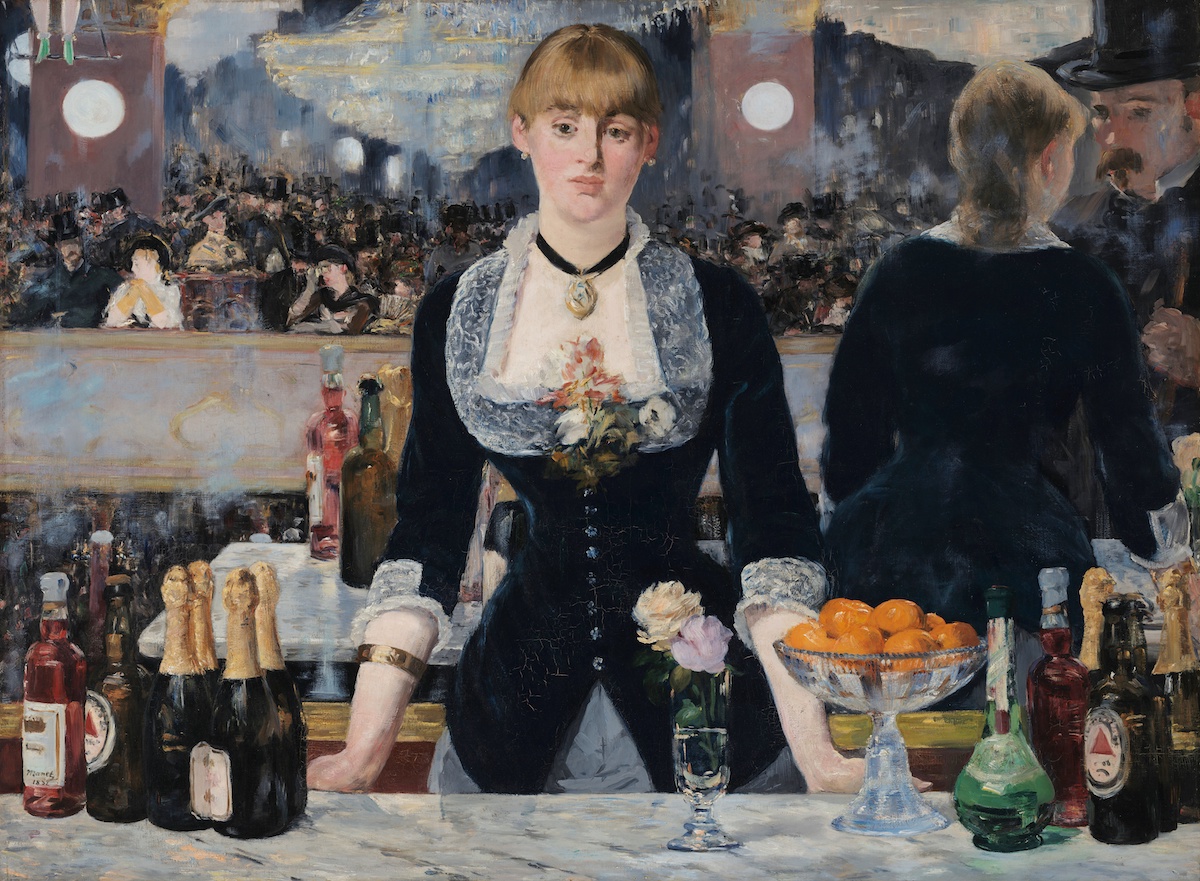 Édouard Manet's A Bar at the Folies-Bergère, painted in 1881–82. Image: The Courtauld Gallery/Wikimedia Commons
Édouard Manet's A Bar at the Folies-Bergère, painted in 1881–82. Image: The Courtauld Gallery/Wikimedia Commons
4. Let there be light
The humble light bulb plays an important cameo role in 20th-century art. Think of the lamp that hangs over the carnage in Picasso’s Guernica, or the American painter Philip Guston’s use of the light bulb motif in many of his paintings.
Neon lighting became an art form in its own right following the work of the American artist Dan Flavin and his coloured-light installations of neon tubes; more recently we see light used in Martin Creed’s wonderfully minimal work – a gallery with the light turning on and off every five seconds.
None of these artworks would have been created without the invention of electric lighting – the incandescent light bulb – at the end of the 19th century. It transformed the world. Night was turned into day. It also ensured that artists, just like everyone else, could work much longer hours and paint night scenes through artificial illumination. It is striking to think that until the 19th century, an era that pioneered first gas illumination and then, thanks to Edison, the light bulb, the only sources of light were the sun and the flames of fire or candles.
That incandescent light bulb (1879) cast a bright, unwavering light that transformed vision, opening up a world that had previously been enveloped in shadows. It is this clear, consistent light that illuminates Manet’s painting A Bar at the Folies-Bergère, painted just three years after the invention of the light bulb, making it a remarkable image of a new technology. The two white circles in the background seem to be the source of the lighting, although there must have been many more fixtures around the cabaret, which was known for being one of the first places in Paris to install electric lighting.
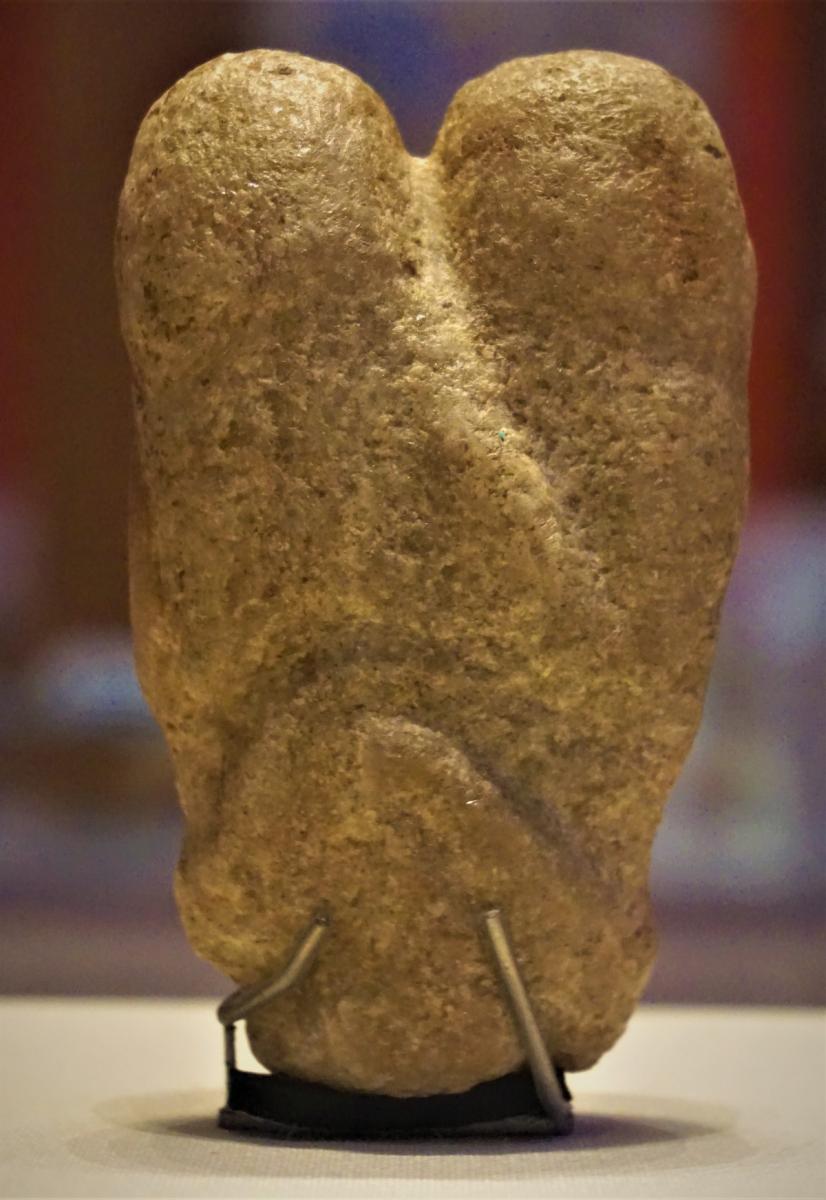 The Ain Sakhri lovers, British Museum. Image: Creative Commons/Joy of Museums
The Ain Sakhri lovers, British Museum. Image: Creative Commons/Joy of Museums
5. The first kiss
Which are the greatest kisses in art?
You might think of Constantin Brancusi’s The Kiss, carved in 1916 from a single limestone block, two archaic forms joined so closely they appear to become one body.
Brancusi’s sculpture reminds us in turn of another famous kiss image – Giotto’s fresco painting in the Arena Chapel of Joachim and Anne meeting at the Golden Gate. The parents of the Virgin Mary become one in the astonishingly moving depiction of their kiss, as they learn they are to become parents. And then there is Psyche Revived by Cupid’s Kiss, carved in marble by the Italian sculptor Antonio Canova in the 1790s. Here the kiss has happened, it seems, as Psyche’s languorous arms reach up to embrace her saviour. It is a great image of awakening love.
The first kiss in art, however, is harder to find.
There are few kisses in Greek and Roman art (I’ve yet to find any good ones). There are none in Egyptian art, with a brief exception in the Amarna period, when everybody was kissing each other after centuries of pharaonic stuffiness. An unfinished limestone statue of Akhenaten tenderly kissing his daughter, from around 1300 BC, is kept in the Egyptian Museum in Cairo.
Ten thousand years earlier, an artist living in the region around the present-day Palestinian city of Bethlehem reached into a stream and drew out a large pebble. Into this they carved an image of two figures making love. Now known as the Ain Sakhri lovers, after the caves where it was found early in the 20th century, this carving is less perhaps an image of a kiss – there is not enough detail – than of what a kiss means: not just an expression of desire and affection but also of consolation.
If you enjoyed this Instant Expert why not forward this on to a friend who you think would enjoy it too?
Show me another Instant Expert story – theartssociety.org/instant-expert
About the Author
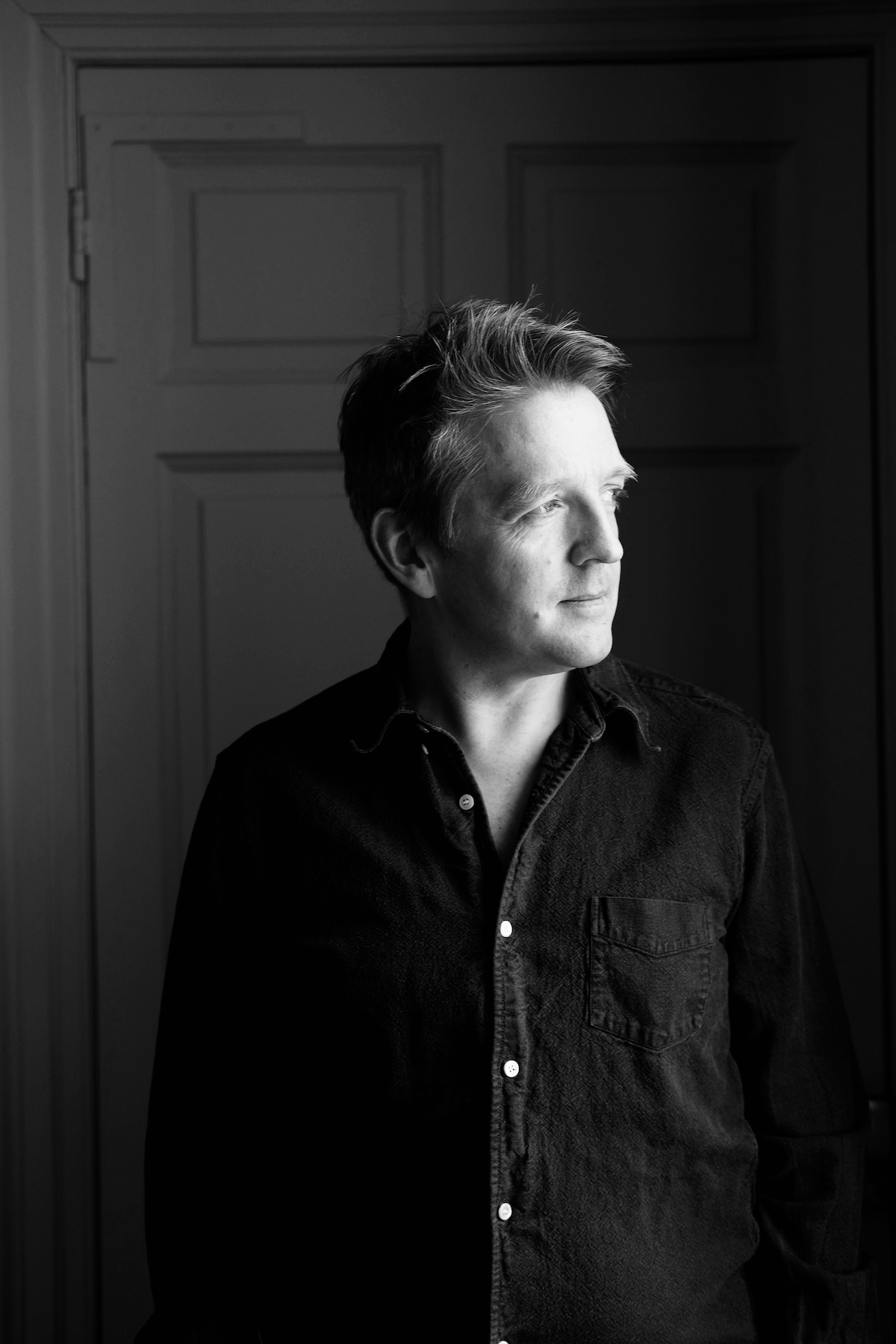
Dr John-Paul Stonard
is an art historian, author and curator. His book Creation: Art Since the Beginning (Bloomsbury, 2021) was selected as a Sunday Times Art Book of the Year. It was transformed into a series of lectures: Animals, Gods, Nature and Ideas – first given in Walpole, Suffolk, in 2022. His 2021 book Chatsworth, Arcadia, Now (Particular Books) tells the story of the Devonshire collection at Chatsworth House; it is also the subject of an available lecture. His first book Fault Lines: Art in Germany 1945–1955 was published in 2007 and based on a PhD completed at the Courtauld Institute of Art. Among his talks for The Arts Society are Picasso and his legacy, The art miracle: postwar Germany, art and artists and Kenneth Clark: art, life and television.
Article Tags
JOIN OUR MAILING LIST
Become an instant expert!
Find out more about the arts by becoming a Supporter of The Arts Society.
For just £20 a year you will receive invitations to exclusive member events and courses, special offers and concessions, our regular newsletter and our beautiful arts magazine, full of news, views, events and artist profiles.
FIND YOUR NEAREST SOCIETY
MORE FEATURES
Ever wanted to write a crime novel? As Britain’s annual crime writing festival opens, we uncover some top leads
It’s just 10 days until the Summer Olympic Games open in Paris. To mark the moment, Simon Inglis reveals how art and design play a key part in this, the world’s most spectacular multi-sport competition



